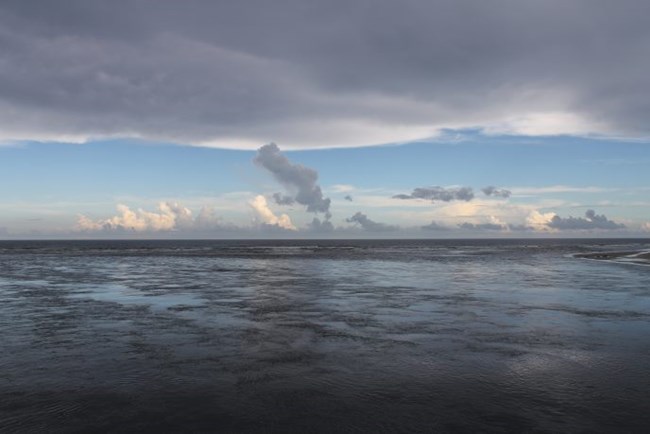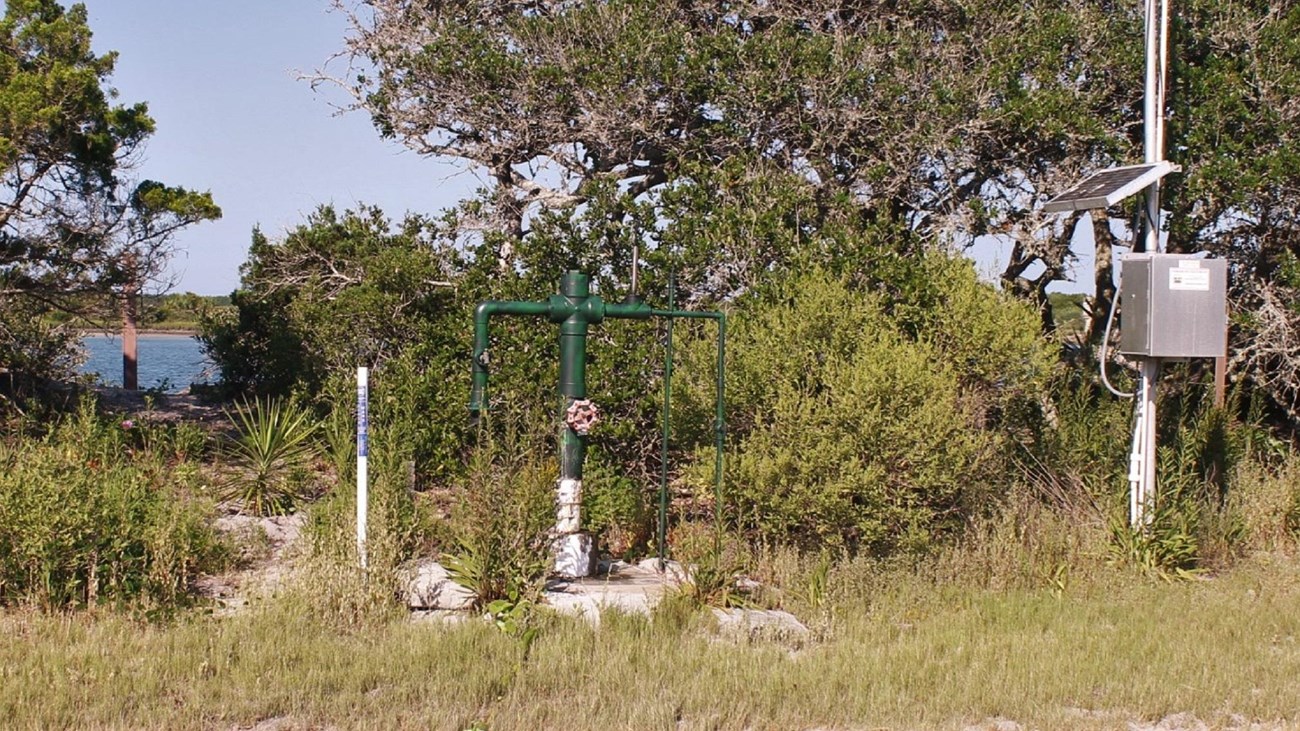
NPS photo We live on a water planet. (About 70% of the Earth's surface is covered in water.) We ourselves are primarily water beings. (Upwards of 60% of the human body is composed of water.) And Fort Matanzas is basically an aquatic park. Being located on the Florida coast, the entire park (along with most of the state) has been under water at varying times in the geologic past, as Earth's sea levels have risen and fallen. Even today, the highest point in the park is less than 25 feet in height, with most of the park rising less than 5 feet above sea level. High tides cover the beach and erode away the dunes, while flooding the marsh land along the Matanzas River, which is connected to the sea via the Matanzas Inlet. In fact, to get to the actual fort on Rattlesnake Island, park visitors and staff must take a boat from the visitor center on Anastasia Island. Water dominates the landscape, is essential to the creatures that inhabit the park, and is integral to the human history interpreted here. Accordingly, the National Park Service (NPS) considers the quality of the water at Fort Matanzas (and all the other parks throughout the system) to be a resource worth protecting and monitoring in perpetuity. The NPS maintains a fixed-station water quality monitoring datasonde that collects readings of six different parameters (pH, dissolved oxygen, temperature, salinity, turbidity, and depth) every 30 minutes. Concurrently, the park hosts a groundwater quality monitoring well that is maintained by the St. Johns River Water Management District. This well collects data on: alkalinity, calcium, chlorides, conductivity, potassium, magnesium, sodium, pH, sulfates, total dissolved solids, and temperature. Additionally, once every five years the NPS conducts an assessment of the estuarine waters at various locations in the park. This survey assesses water clarity, chlorophyll a, dissolved inorganic nitrogen, dissolved inorganic phosphorus, and dissolved oxygen. (In 2012 the park received an overall "good" rating for these parameters.) We drink water every day to maintain our very lives. Much of the food we eat, especially here on the coast, comes directly from the ocean or the estuary. The air we breathe and the basis of our food web comes from plants that depend on water to carry out photosynthesis. A healthy maritime ecosystem, such as the one preserved and interpreted at Fort Matanzas, depends on clean and copious water. And for many of our visitors, immersing themselves in the ocean and/or the river, especially on a hot Florida day, is an irresistible and treasured part of their park experience. For all these reasons, tracking and maintaining the quality of our precious water resources is part and parcel of managing a national park. If the water quality of the parks themselves is compromised, that does not bode well for the environment as a whole. 
Groundwater monitoring well
The NPS partners with the community on a water quality monitoring project |
Last updated: January 23, 2021
